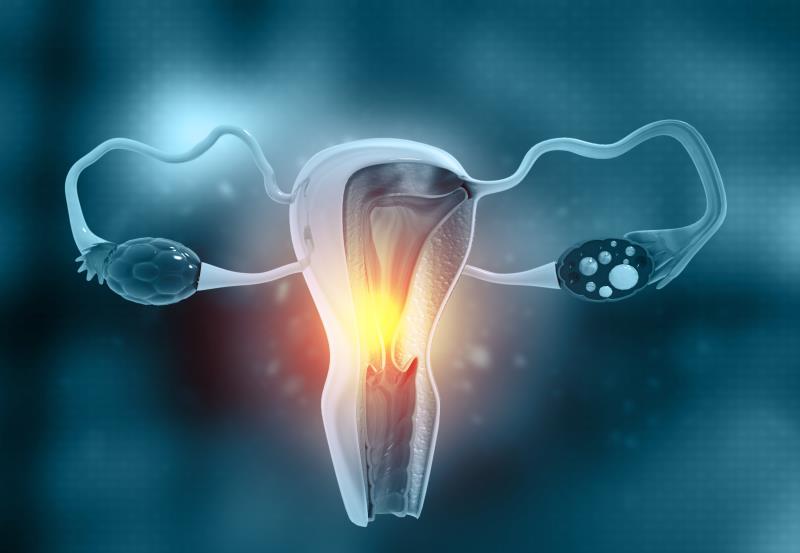Less risk, same benefit with relugolix combination vs monotherapy for endometriosis-related pain





In the treatment of women with endometriosis-associated pain, relugolix combination has a risk-benefit profile that is more favourable than that of monotherapy, due to the latter contributing to increased vasomotor symptoms and substantial bone mineral density (BMD) loss, as shown in a study.
The findings were based on an ad hoc analysis of the efficacy and safety data of relugolix combination therapy (relugolix 40 mg, estradiol 1 mg, norethisterone acetate 0.5 mg) vs monotherapy and transition to combination therapy from the 24-week SPIRIT 1 (n=638) and 2 (n=623) and the 80-week SPIRIT long-term extension (LTE; n=802) studies. Efficacy was assessed as time to benefit (ie, the median time where women had minimal or no dysmenorrhea [Numerical Rating Scale score ≤1]) and safety as time to harm (ie, time to lumbar spine BMD loss of >3 percent from baseline or time to onset of vasomotor symptoms [hyperhidrosis, feeling hot, hot flush, night sweats, and flushing]).
Minimal or no dysmenorrhea was observed within 8 weeks in 56.3 percent of women who received relugolix combination therapy for 24 weeks (combination group), in 75.7 percent of those who were on relugolix monotherapy for the first 12 weeks then switched to combination therapy thereafter (delayed group), and in 12.1 percent of those on placebo during the 24-week treatment (placebo group). [ESHRE 2024, abstract P-308]
The proportion of women with minimal or no dysmenorrhea increased to 82.5 percent, 86.4 percent, and 22.4 percent at week 24 in the combination, delayed, and placebo groups, respectively, and to further 94.5 percent, 95.9 percent, and 90.3 percent at week 52.
Eventually, once everybody was on the combination therapy (ie, during the LTE phase), the proportion of women with minimal or no dysmenorrhea evened out and remained similar between the treatment groups throughout the 104-week follow-up, reported lead study author Prof Christian Becker from the University of Oxford, Oxford, UK.
“Interestingly, if you look at the placebo group … the curve behaved very similar to those [of women] who were on the combination therapy initially,” Becker said, referring to a figure in his presentation slide that showed the benefit assessment.
Harm assessment
DEXA bone images at 12 weeks showed a BMD loss of >3 percent in 1.1 percent of women in the combination group, 5.9 percent in the delayed group, and in 0.8 percent in the placebo group.
“[There was a] slight difference at 12 weeks. And then over the next few weeks and months, [the cumulative proportion of women experiencing BMD loss] continued to increase but eventually levelled out and was basically plateau for everybody,” Becker noted.
The cumulative proportion of women with BMD loss was 10.2 percent, 23.5 percent, and 4.9 percent at week 24; 15.5 percent, 29.4 percent, and 11.3 percent at week 52; and 21.5 percent, 32.1 percent, and 17.4 percent at week 104 in the combination, delayed, and placebo groups, respectively.
Finally, looking at vasomotor symptoms, there was a significantly higher proportion of women who had hot flushes and sweating, among others, in the delayed group than in the combination group at week 4 (16.8 percent vs 4.1 percent), Becker noted.
After 12 weeks, when the delayed group received combination therapy, the proportion of those experiencing vasomotor symptoms plateaued off and was similar as that in other patient groups, he added.
Vasomotor symptoms were reported in 13.5 percent of women in the combination group, 35.3 percent in the delayed group, and 7.4 percent in the placebo group at week 24; 16.4 percent, 38.3 percent, and 12.5 percent at week 52; and 16.8 percent, 38.8 percent, and 16.4 percent at week 104, respectively.
In light of the present data, “treatment initiation with relugolix monotherapy does not provide any efficacy advantages and is associated with a higher cumulative risk of BMD loss compared with relugolix combination therapy,” Becker said.
“The benefit-risk profile of the combination therapy remains favourable over the 2 years, and we’ve seen this in other publications that it’s a safe medication,” he added.